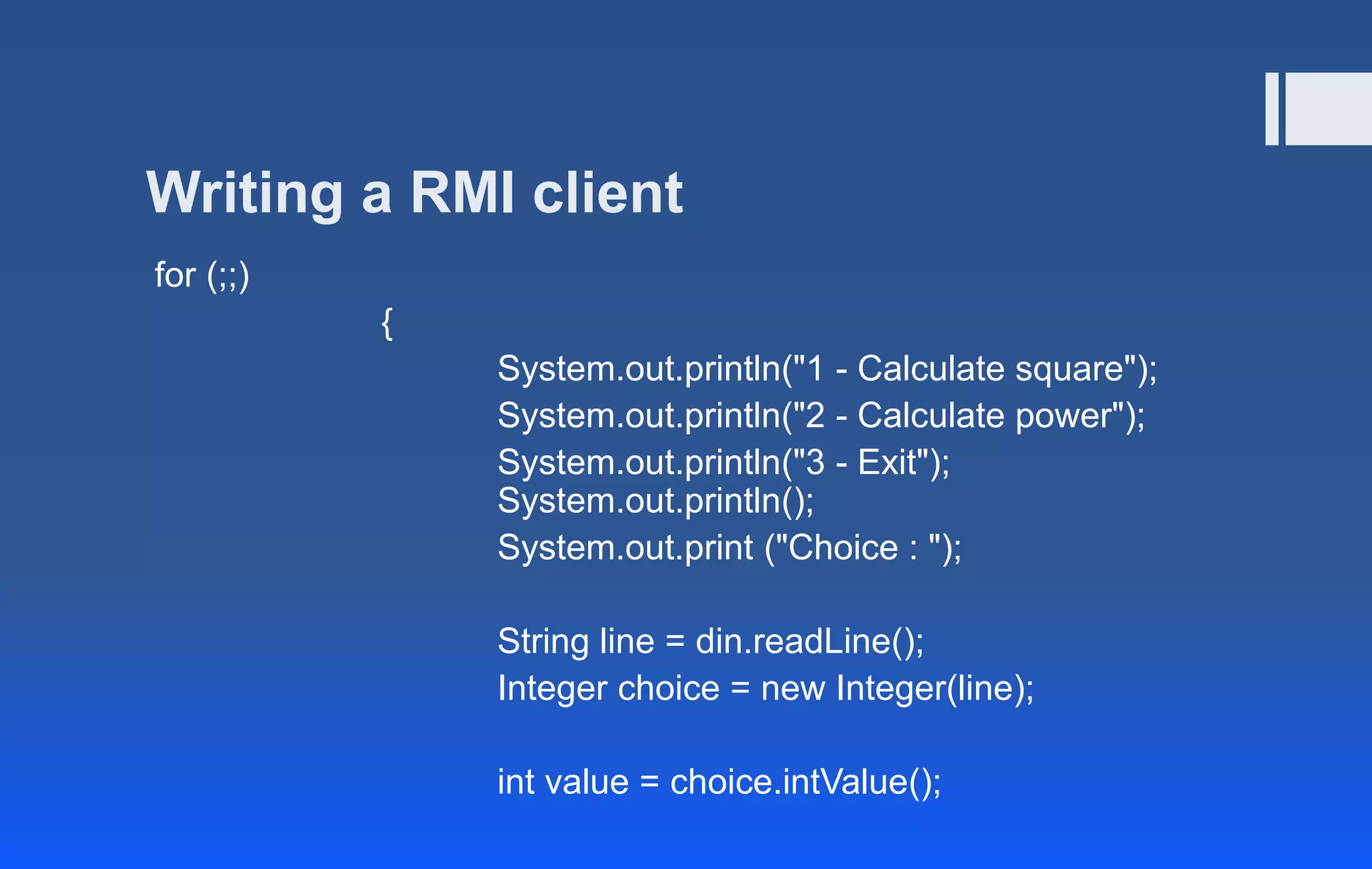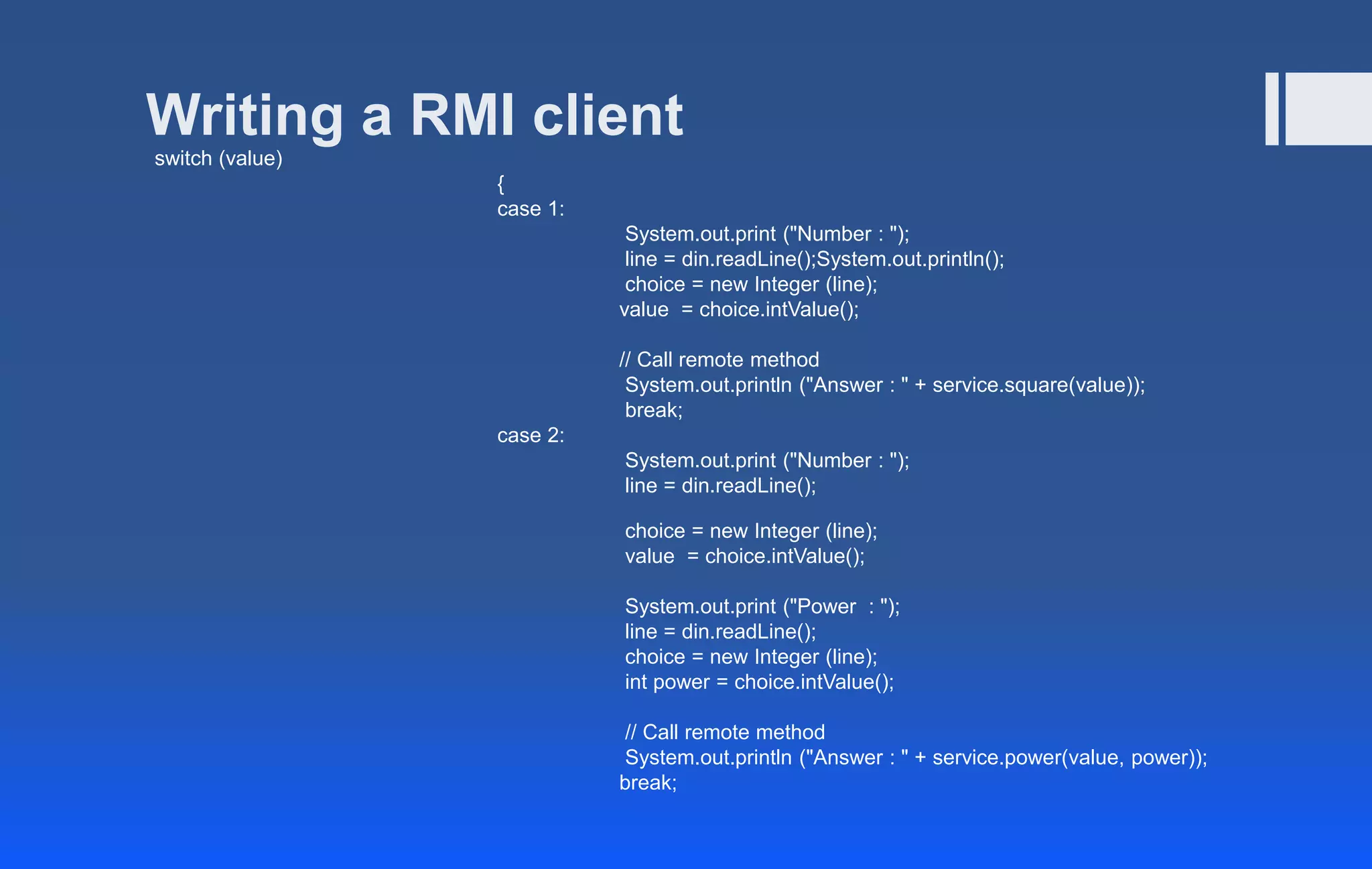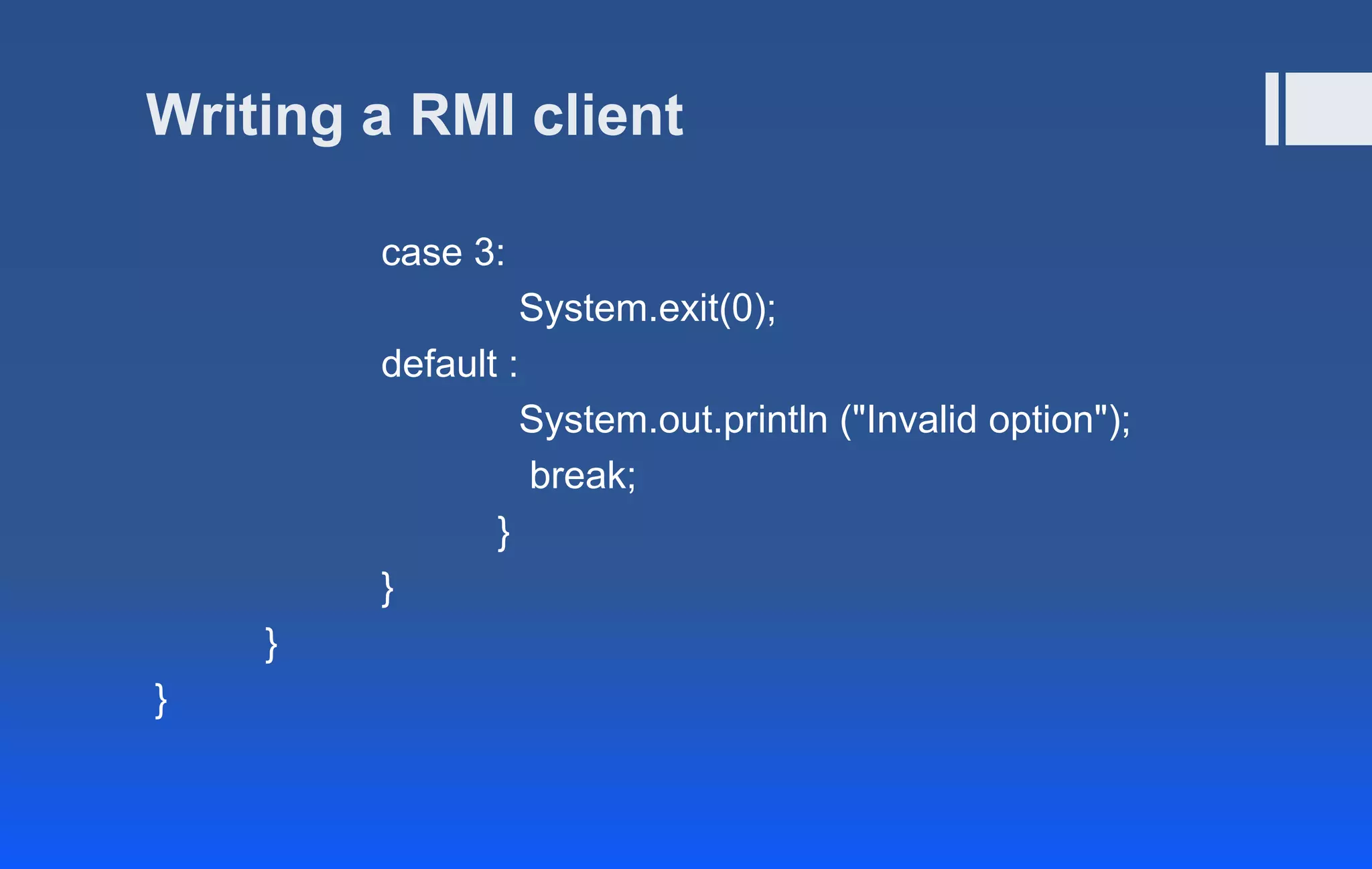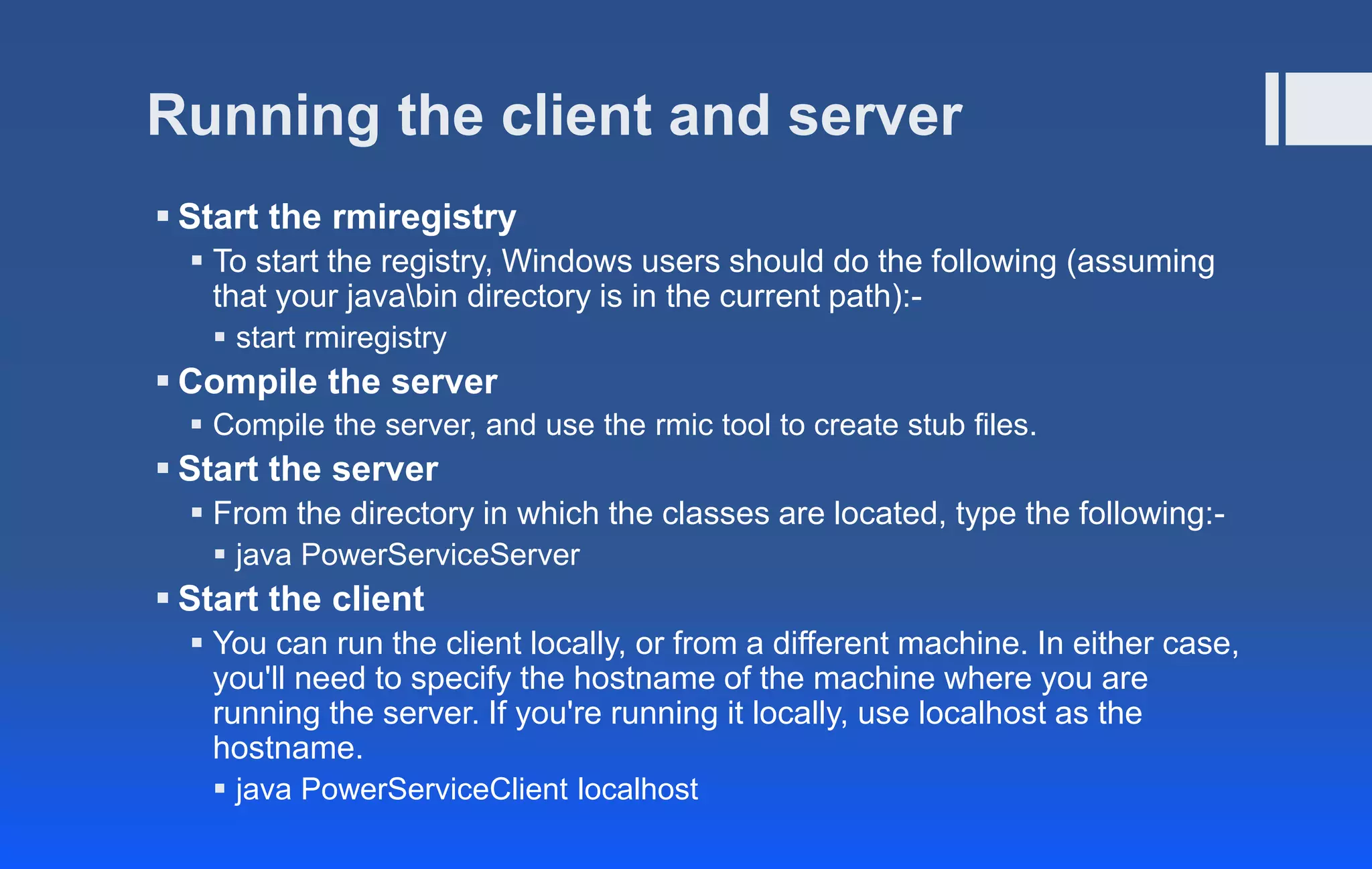RMI allows Java objects to invoke methods on remote Java objects located in another Java Virtual Machine. It handles marshaling parameters, transportation between client and server, and unmarshaling results. To create an RMI application, interfaces define remote services, servers implement interfaces and register with the RMI registry, and clients lookup services and invoke remote methods similarly to local calls. Stub and skeleton objects handle communication between remote VMs.
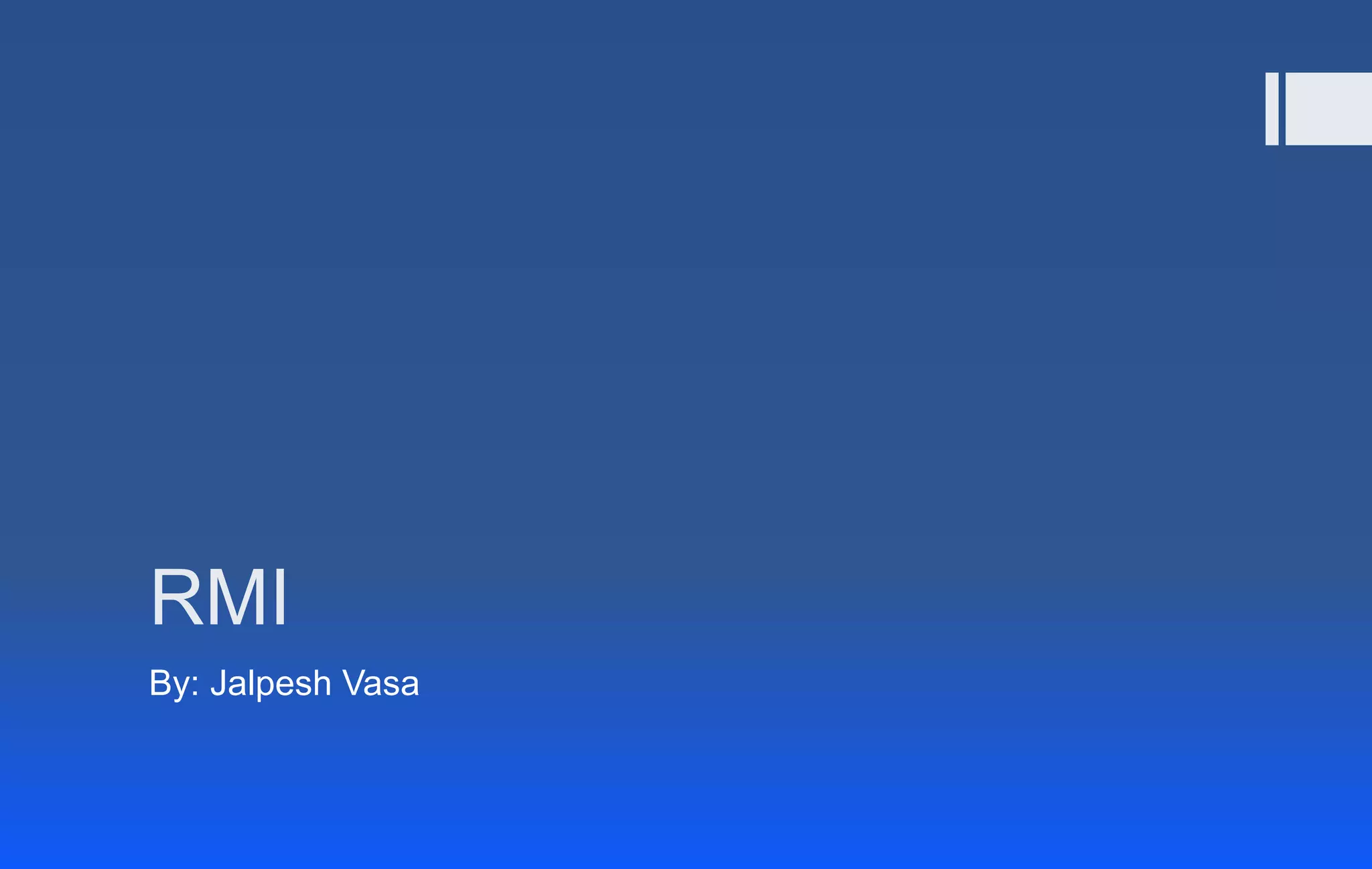
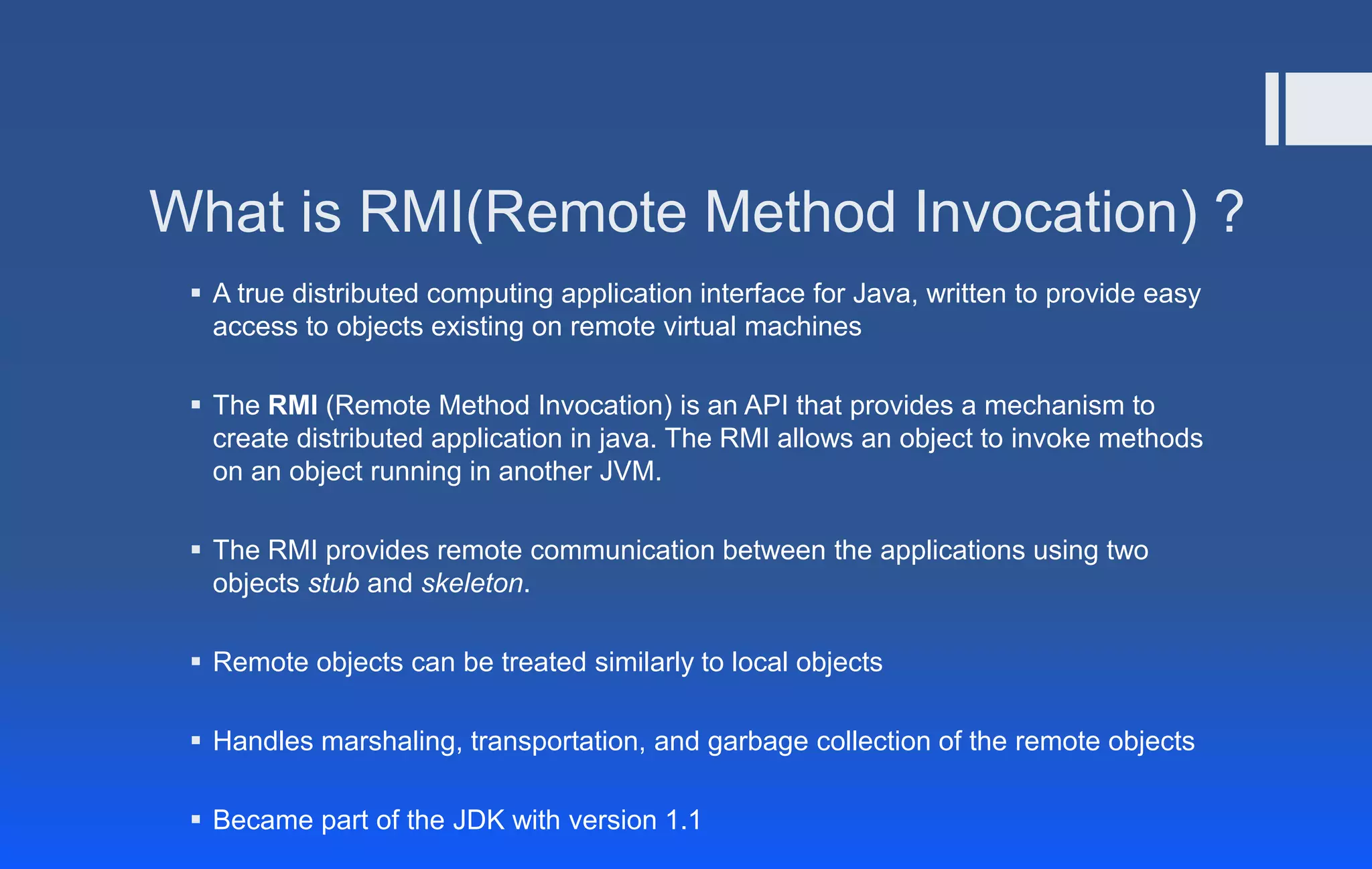
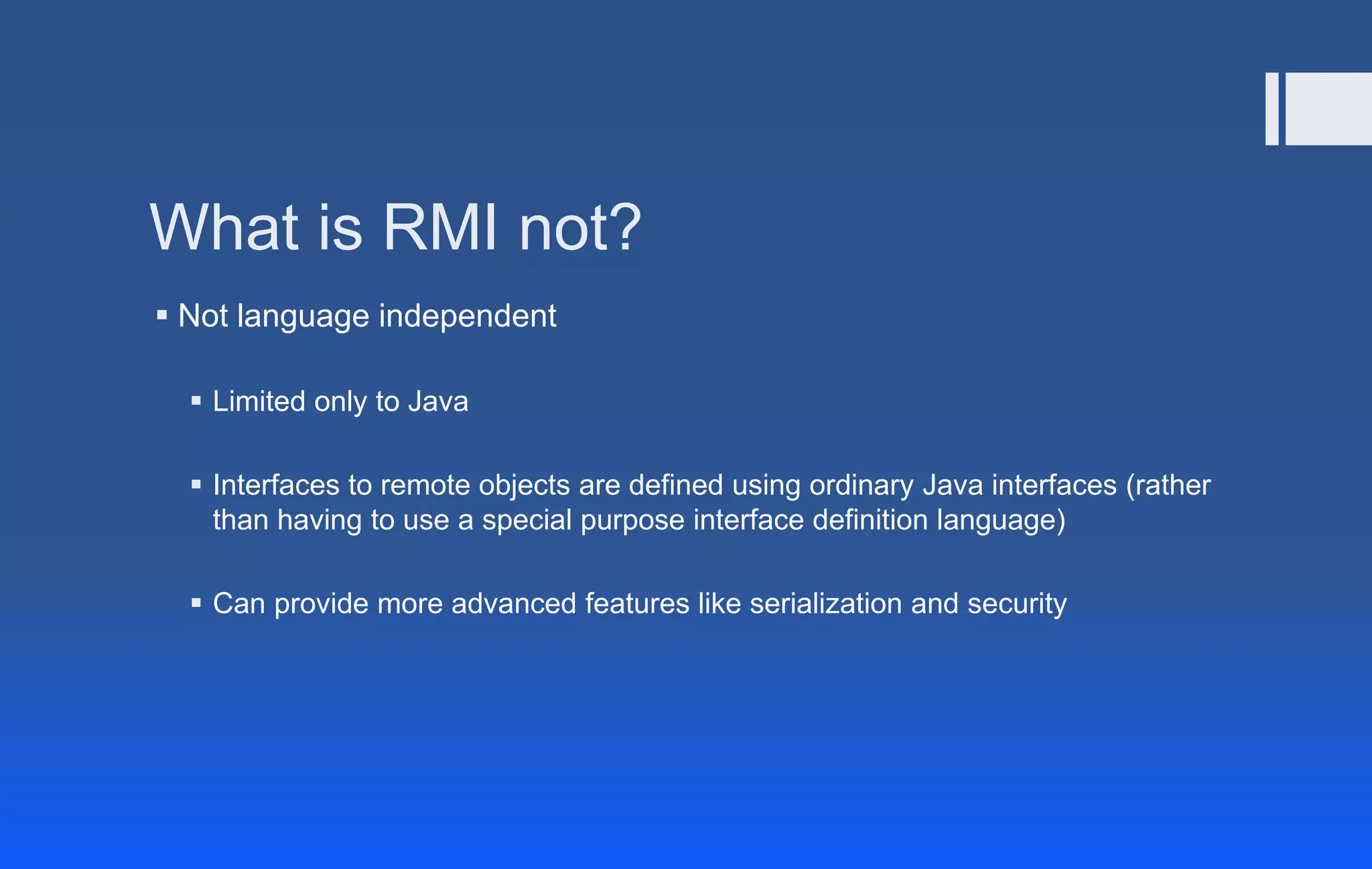
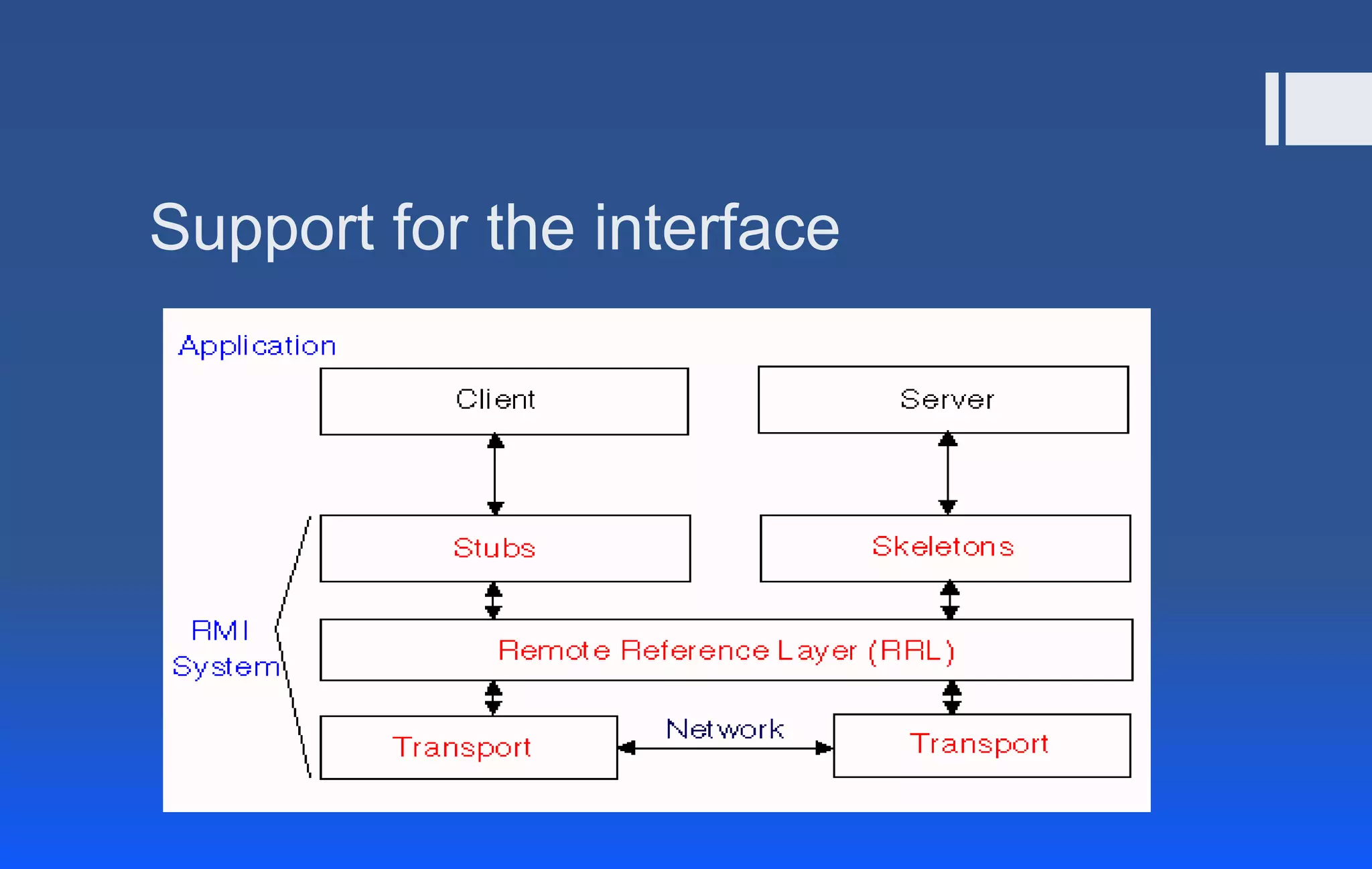
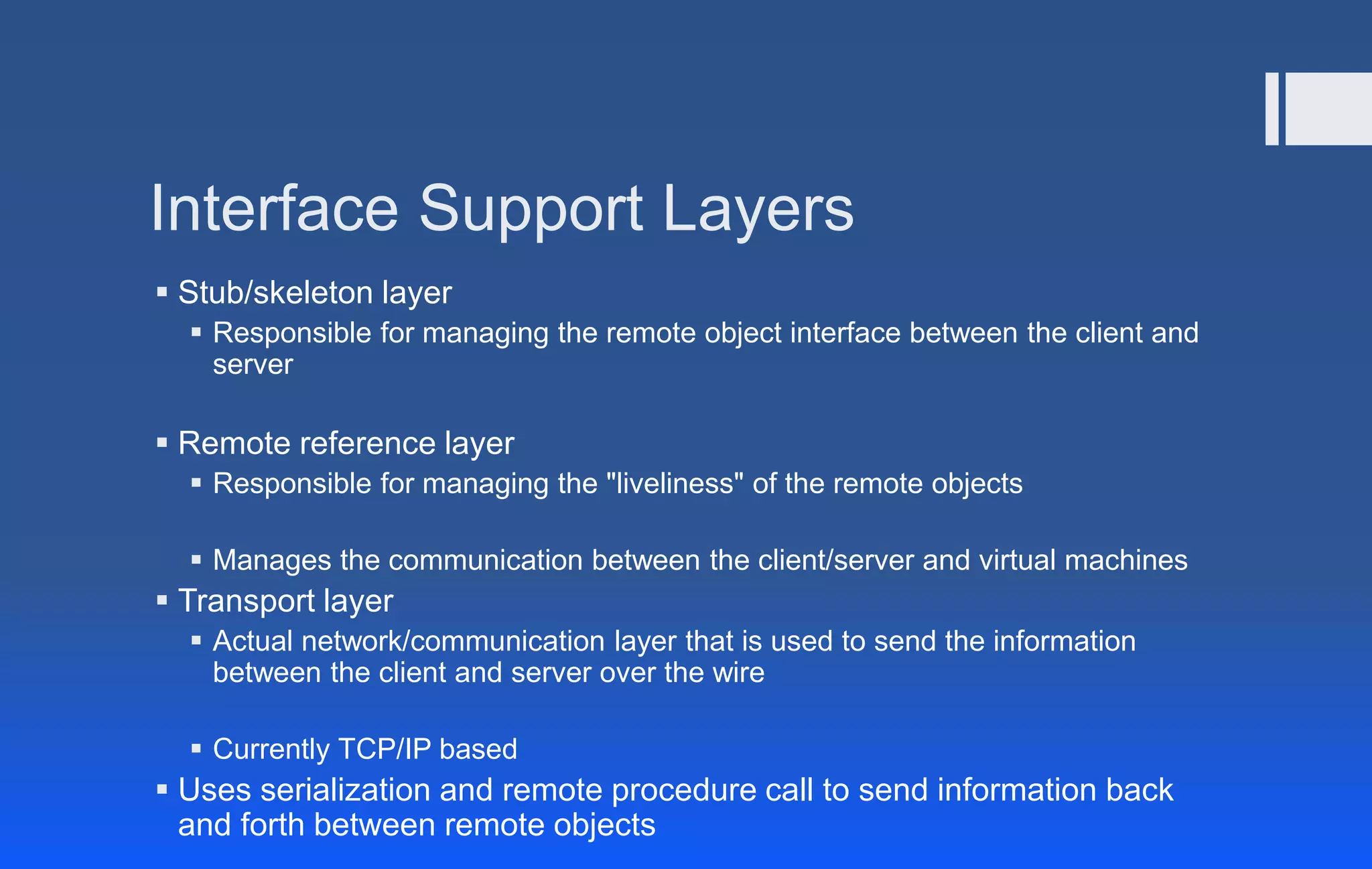
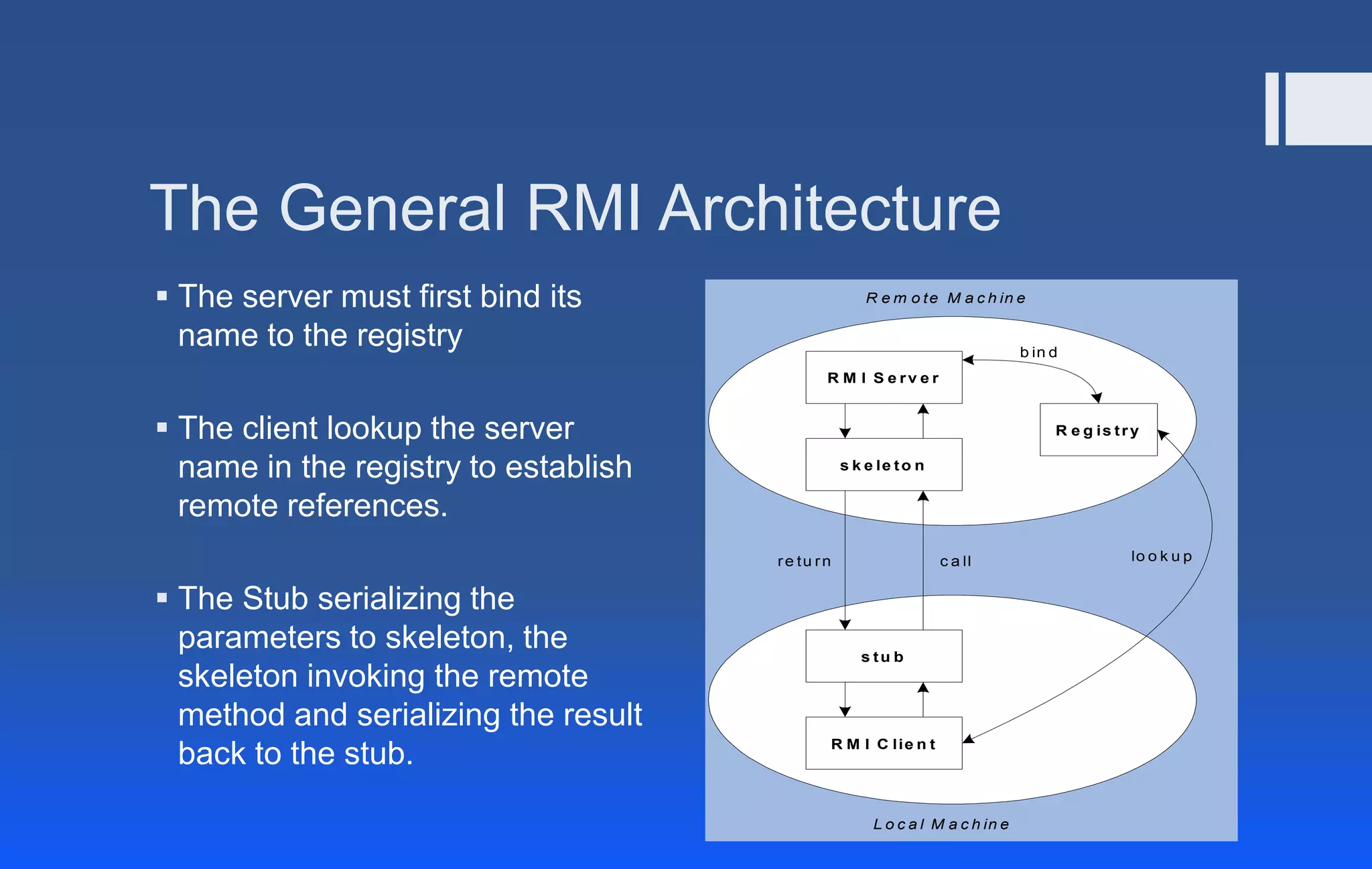
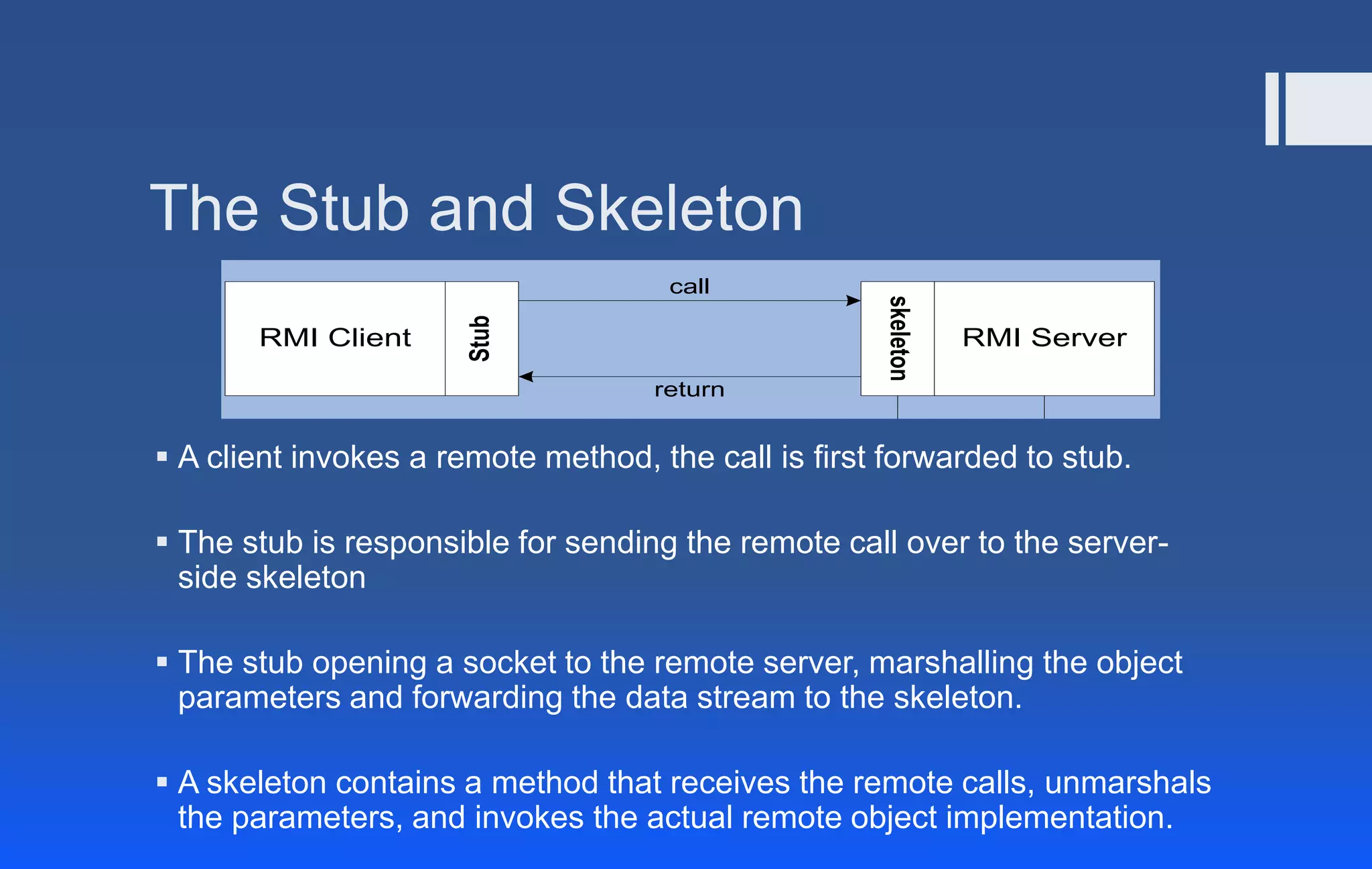
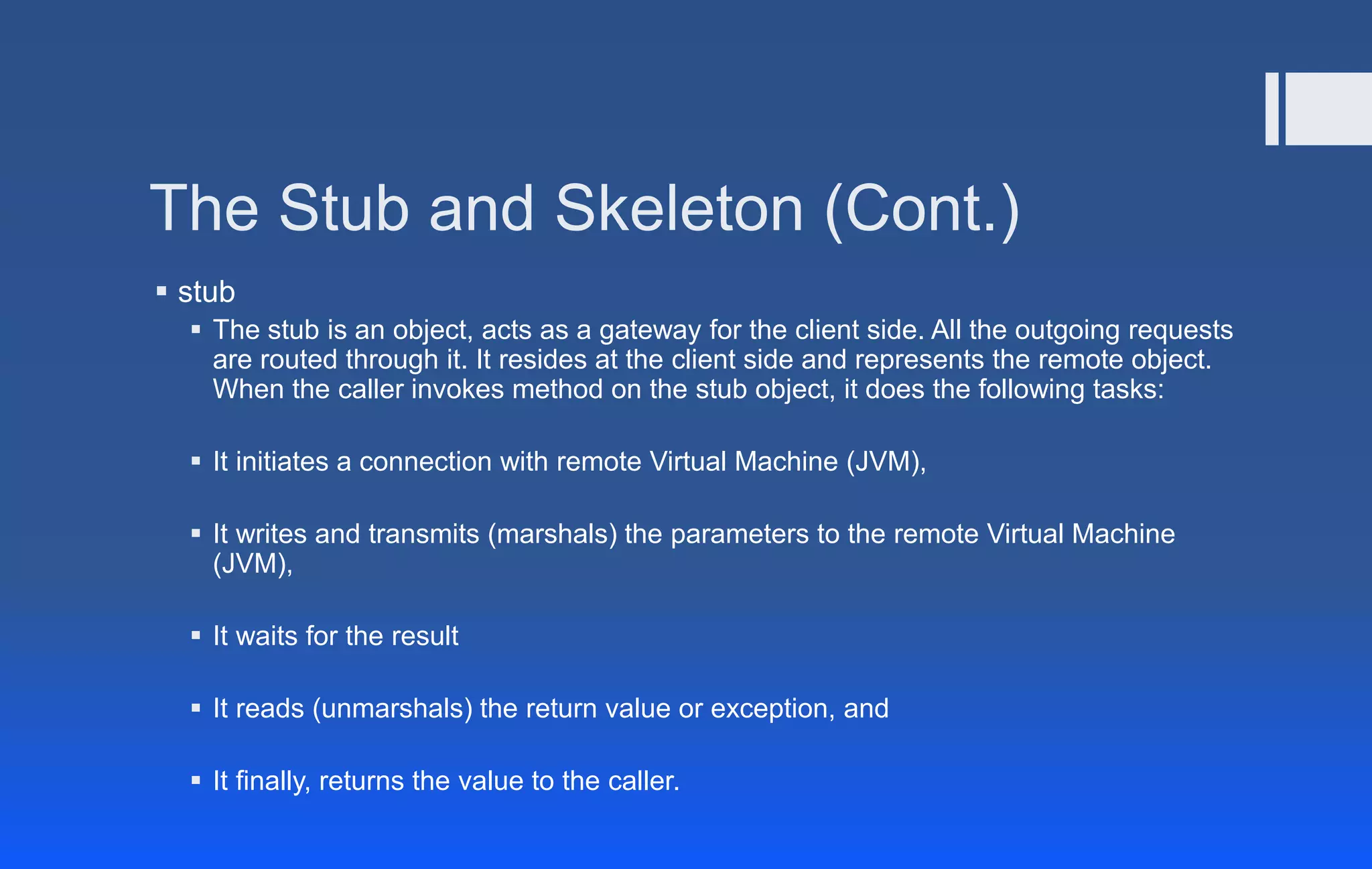
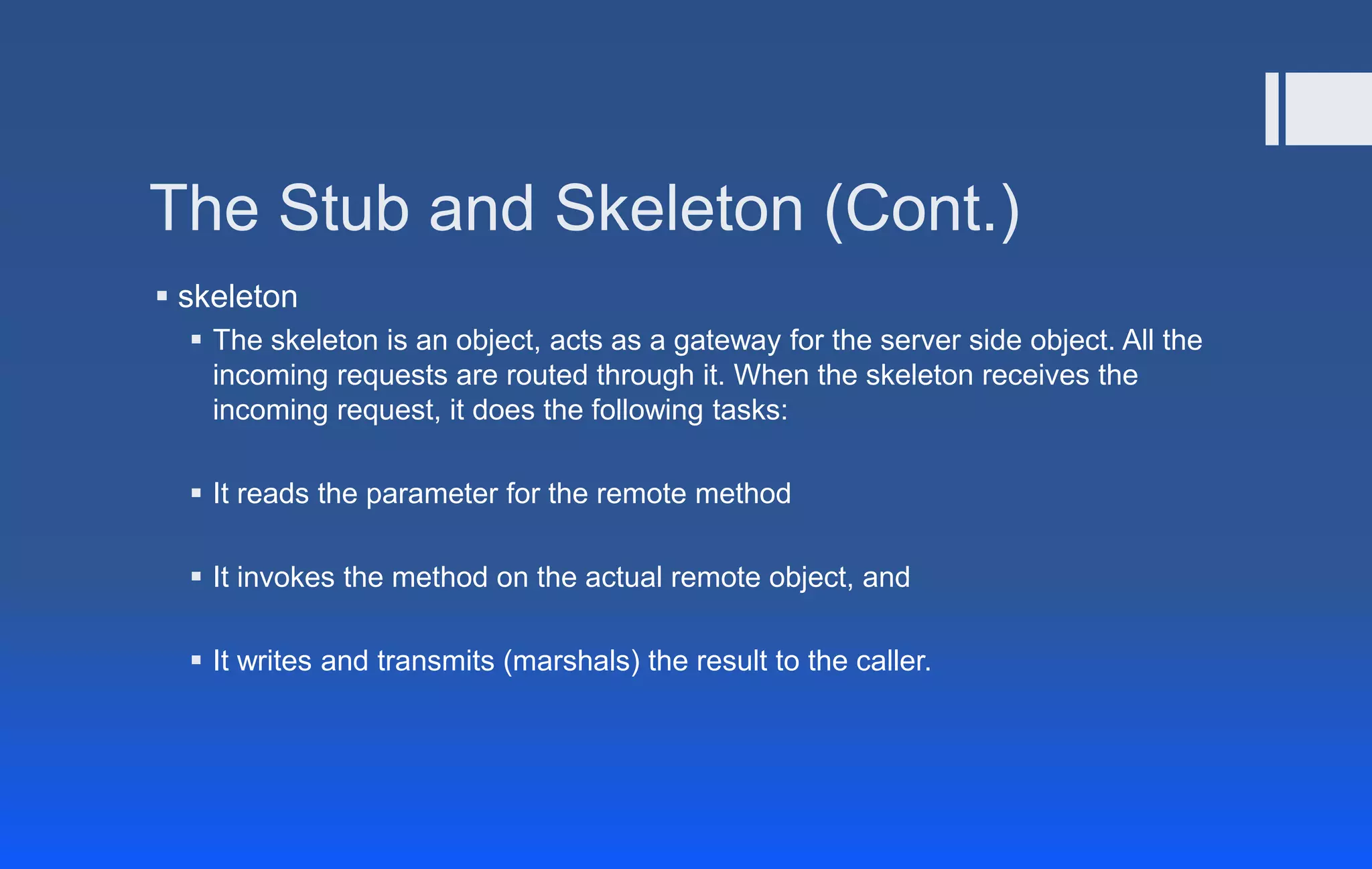
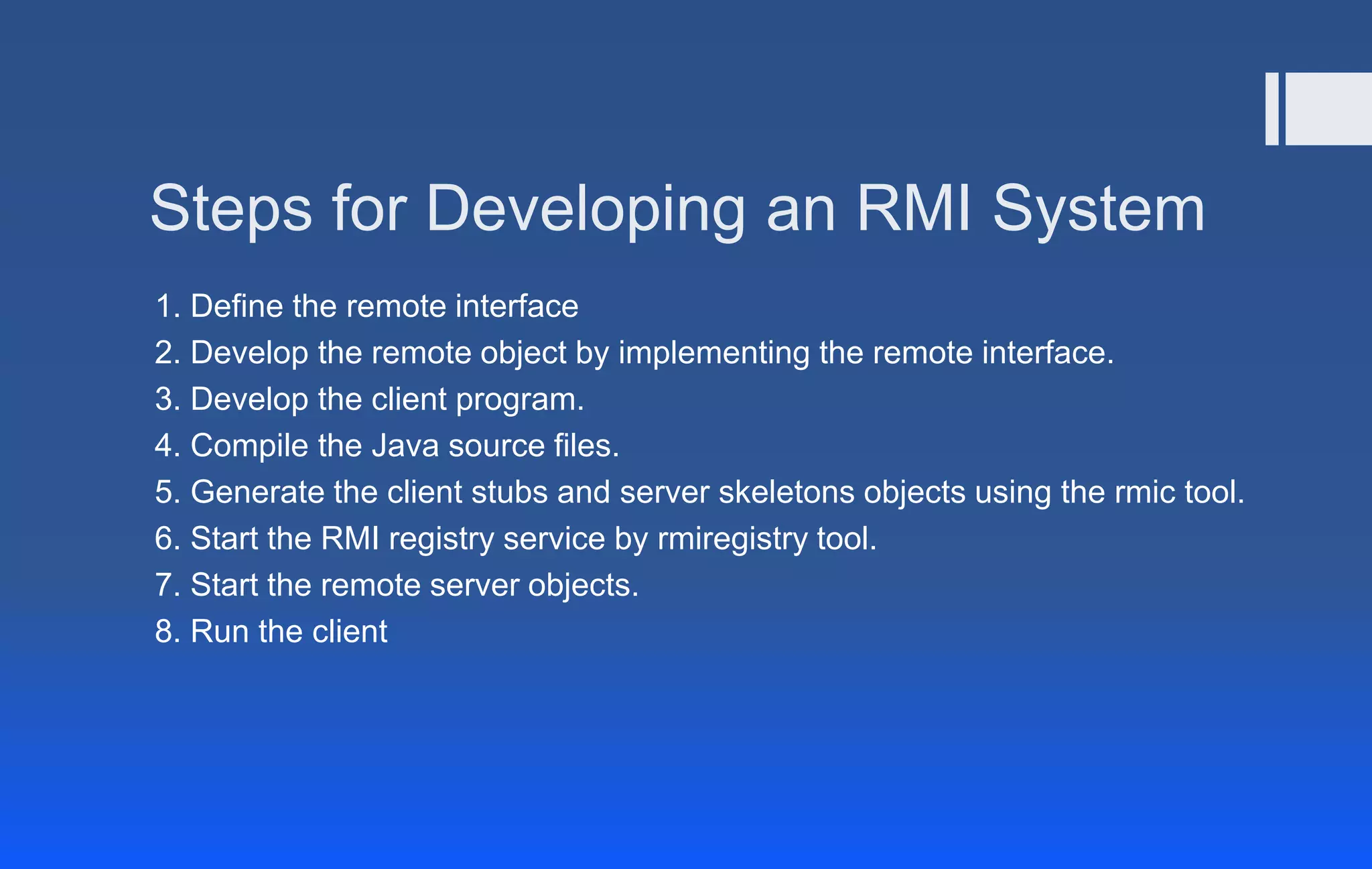
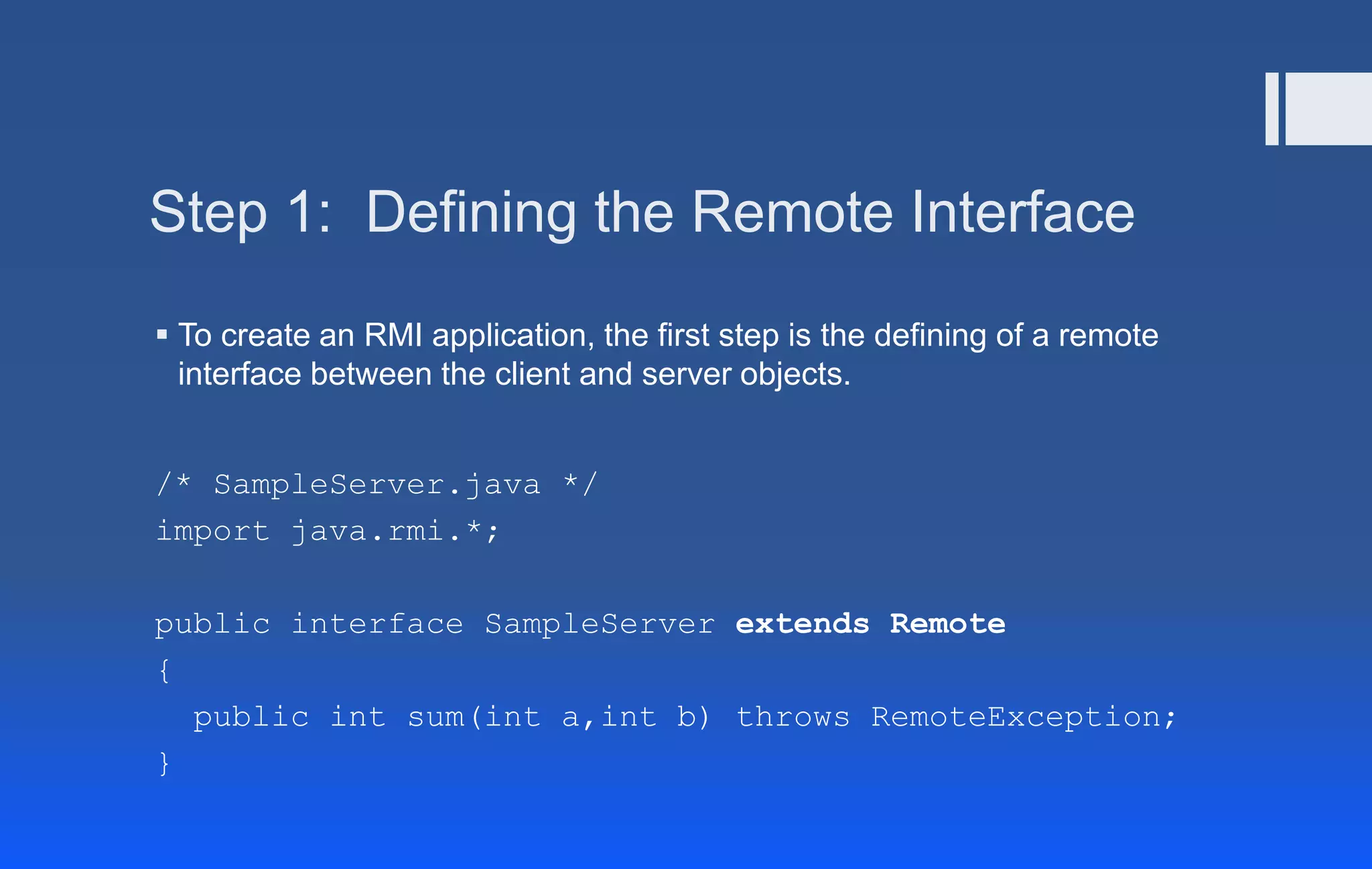
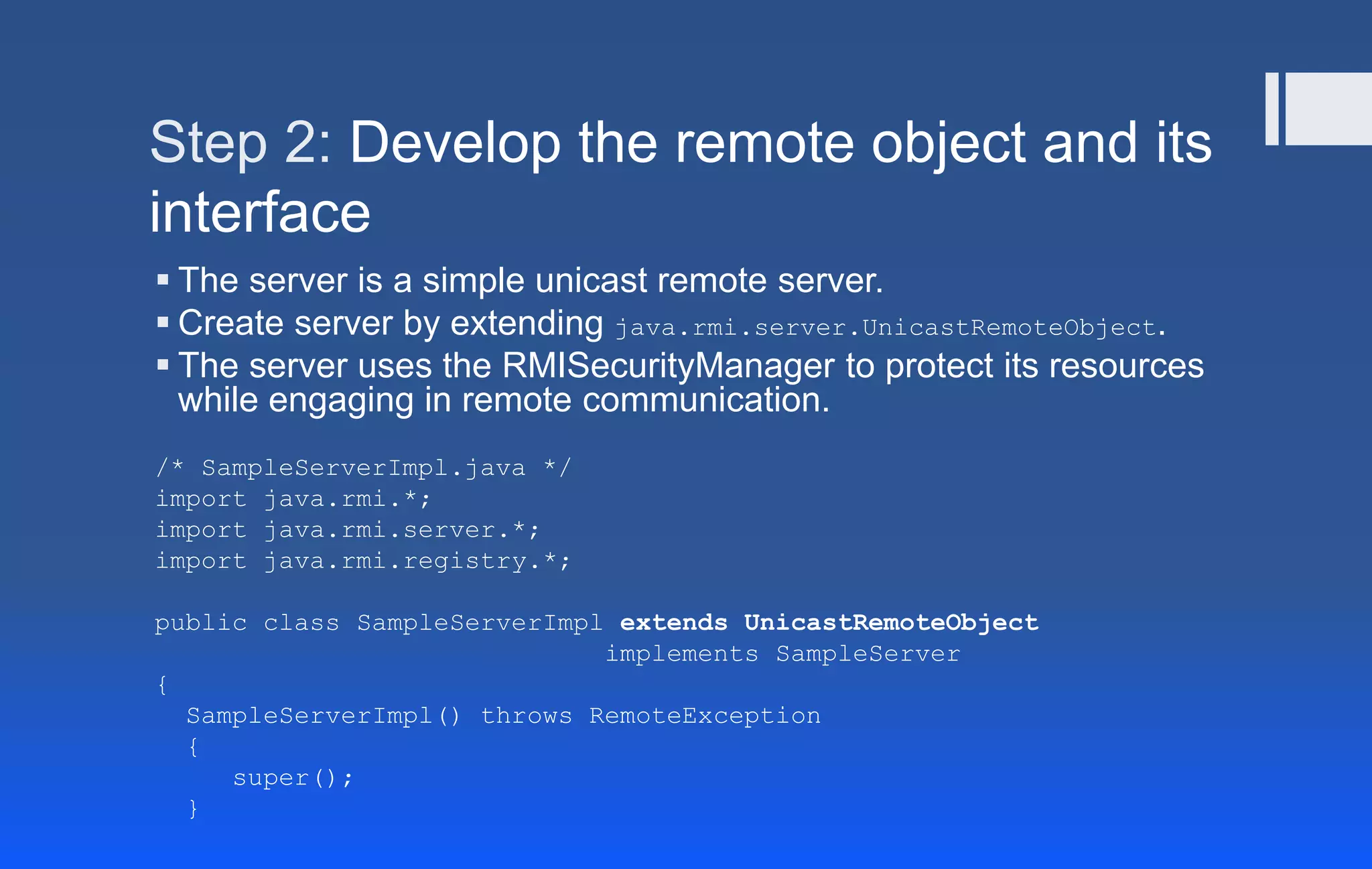
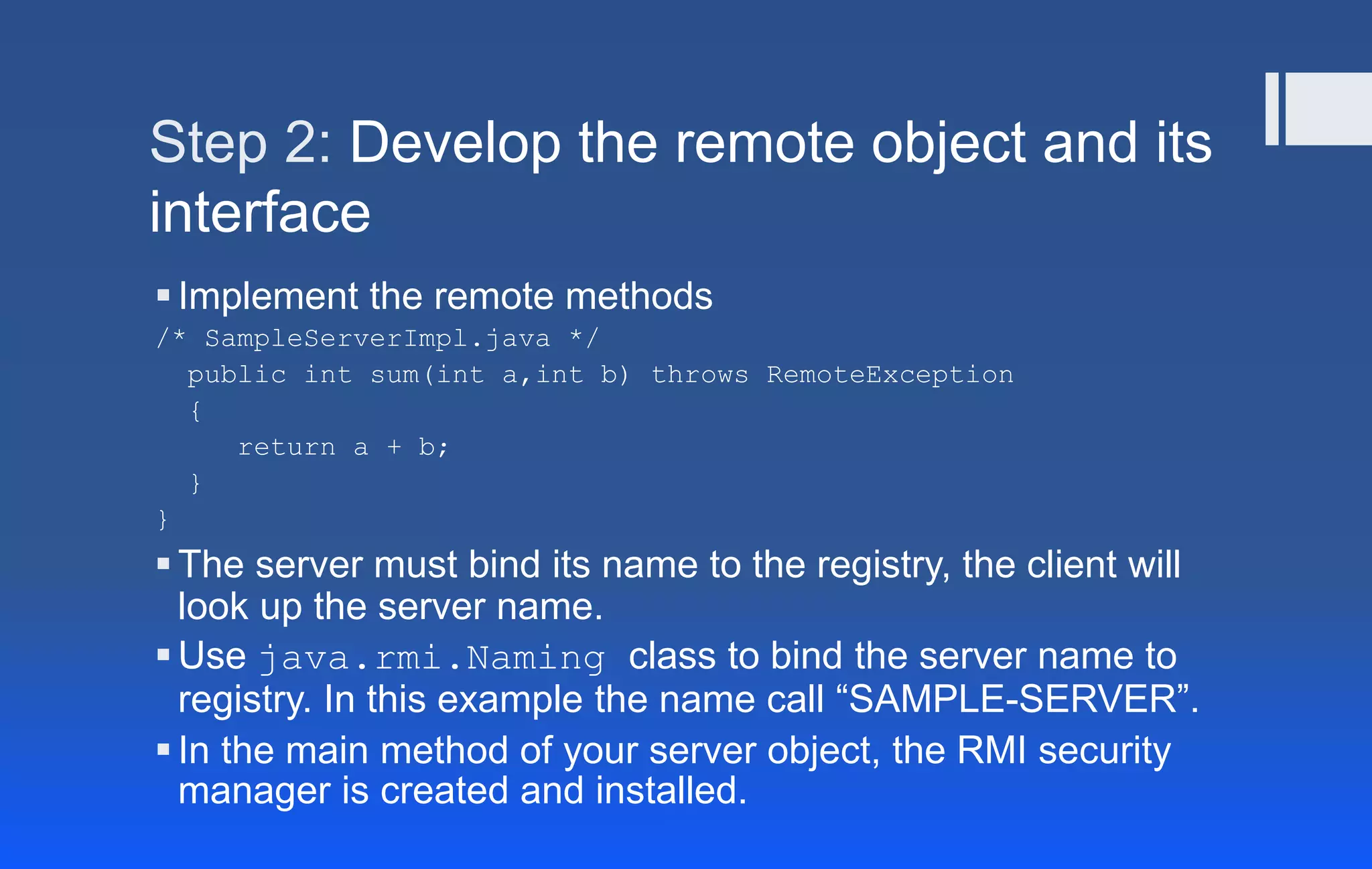
![Step 2: Develop the remote object and its
interface
/* SampleServerImpl.java */
public static void main(String args[])
{
try
{
System.setSecurityManager(new RMISecurityManager());
//set the security manager
//create a local instance of the object
SampleServerImpl Server = new SampleServerImpl();
//put the local instance in the registry
Naming.rebind("SAMPLE-SERVER" , Server);
System.out.println("Server waiting.....");
}
catch (java.net.MalformedURLException me) {
System.out.println("Malformed URL: " + me.toString()); }
catch (RemoteException re) {
System.out.println("Remote exception: " + re.toString()); }
}](https://image.slidesharecdn.com/rmi-180209072810/75/Remote-Method-Invocation-in-JAVA-14-2048.jpg)
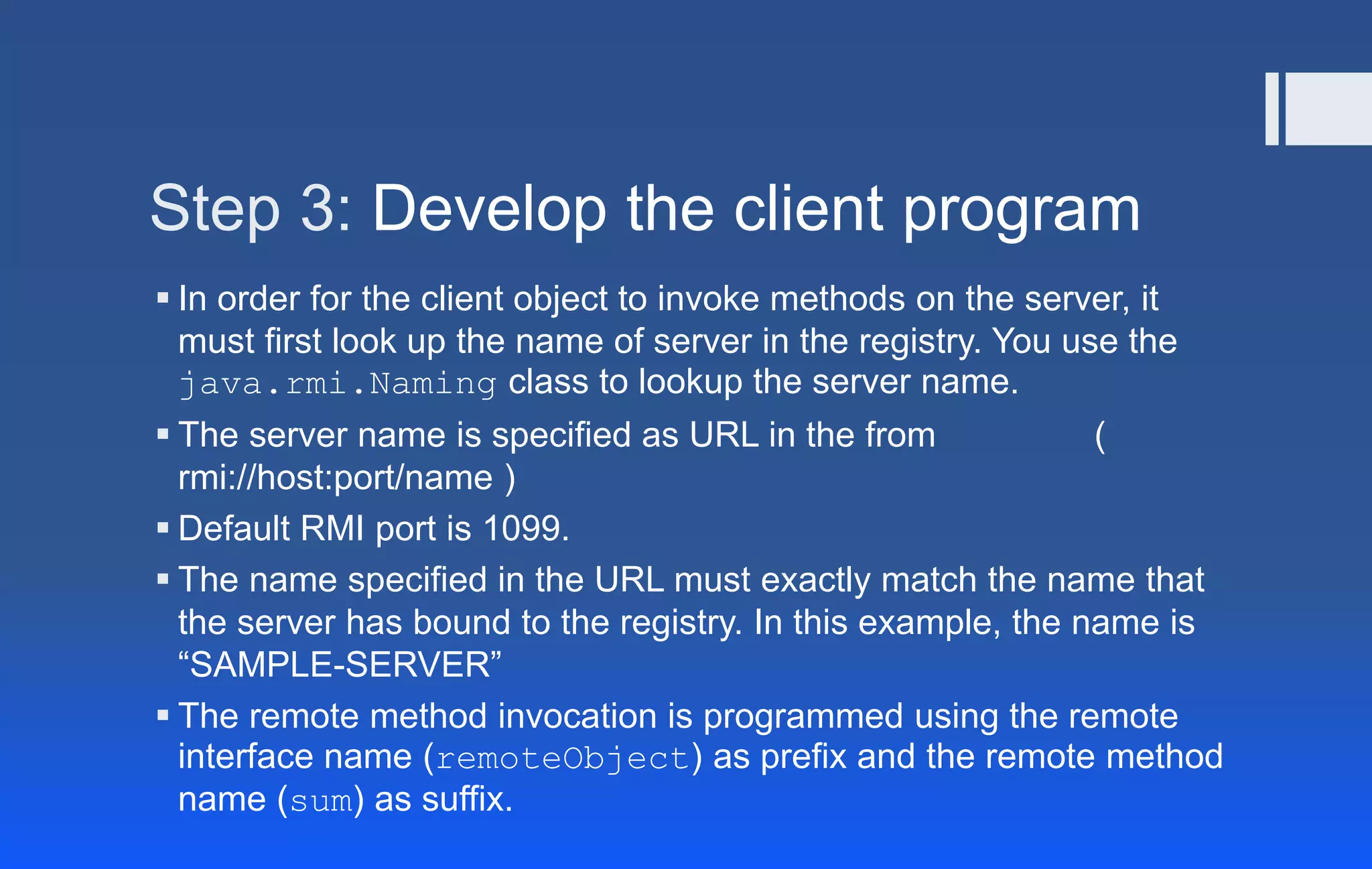
![Step 3: Develop the client program
import java.rmi.*;
import java.rmi.server.*;
public class SampleClient
{
public static void main(String[] args)
{
// set the security manager for the client
System.setSecurityManager(new RMISecurityManager());
//get the remote object from the registry
try
{
System.out.println("Security Manager loaded");
String url = "//localhost/SAMPLE-SERVER";
SampleServer remoteObject = (SampleServer)Naming.lookup(url);
System.out.println("Got remote object");
System.out.println(" 1 + 2 = " + remoteObject.sum(1,2) );
}
catch (RemoteException exc) {
System.out.println("Error in lookup: " + exc.toString()); }
catch (java.net.MalformedURLException exc) {
System.out.println("Malformed URL: " + exc.toString()); }
catch (java.rmi.NotBoundException exc) {
System.out.println("NotBound: " + exc.toString());
}
}
}](https://image.slidesharecdn.com/rmi-180209072810/75/Remote-Method-Invocation-in-JAVA-16-2048.jpg)
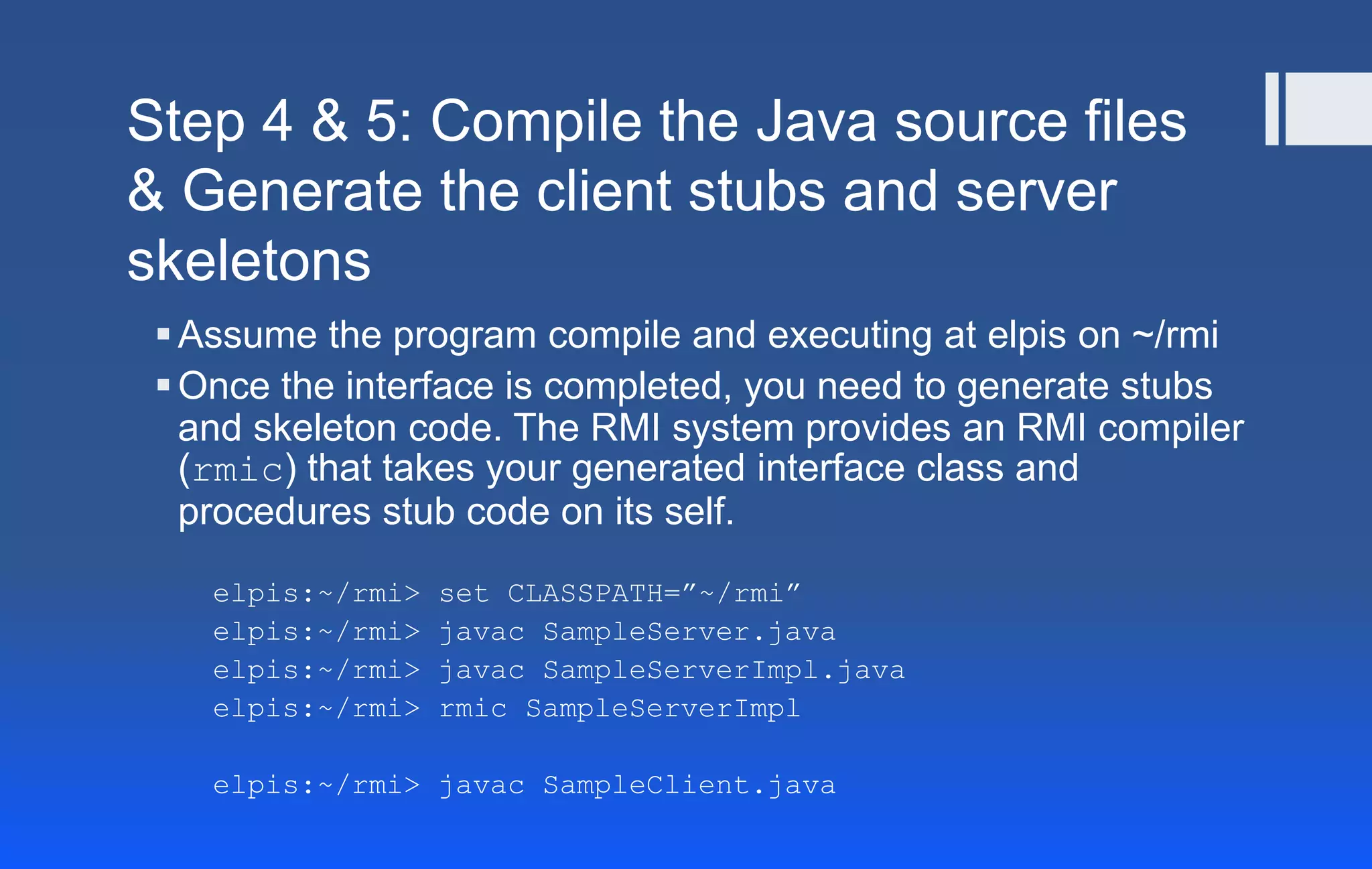
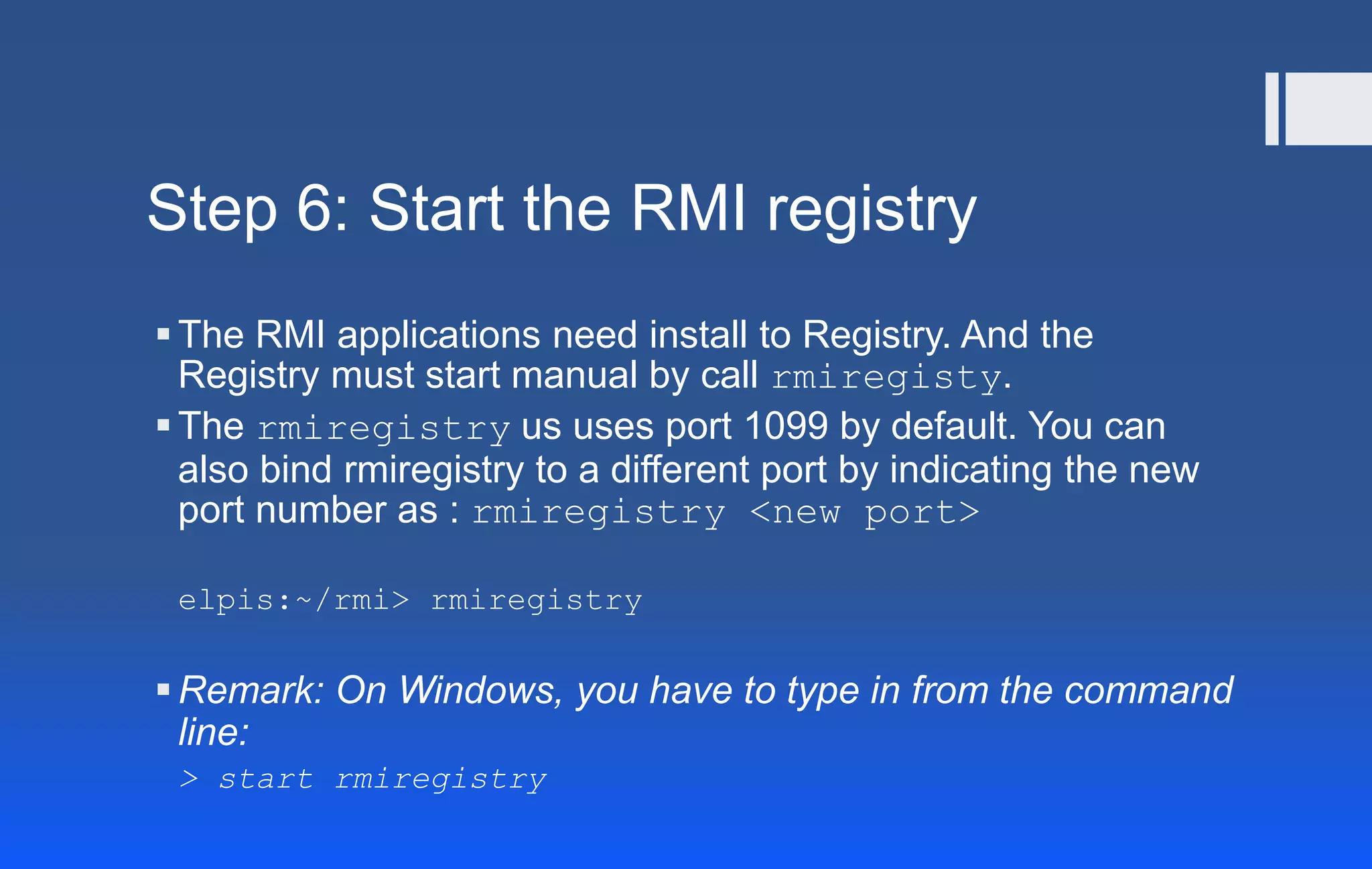
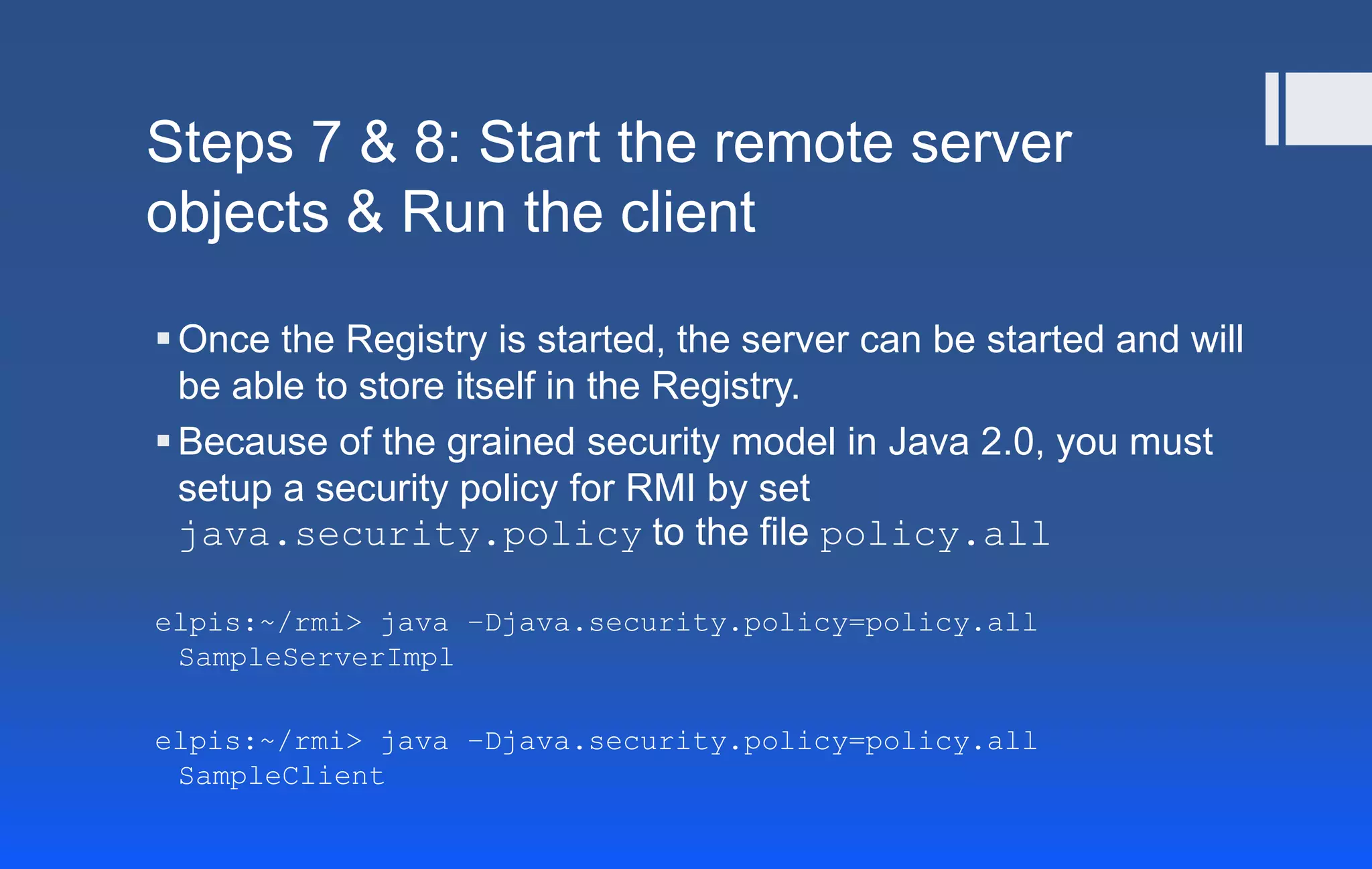
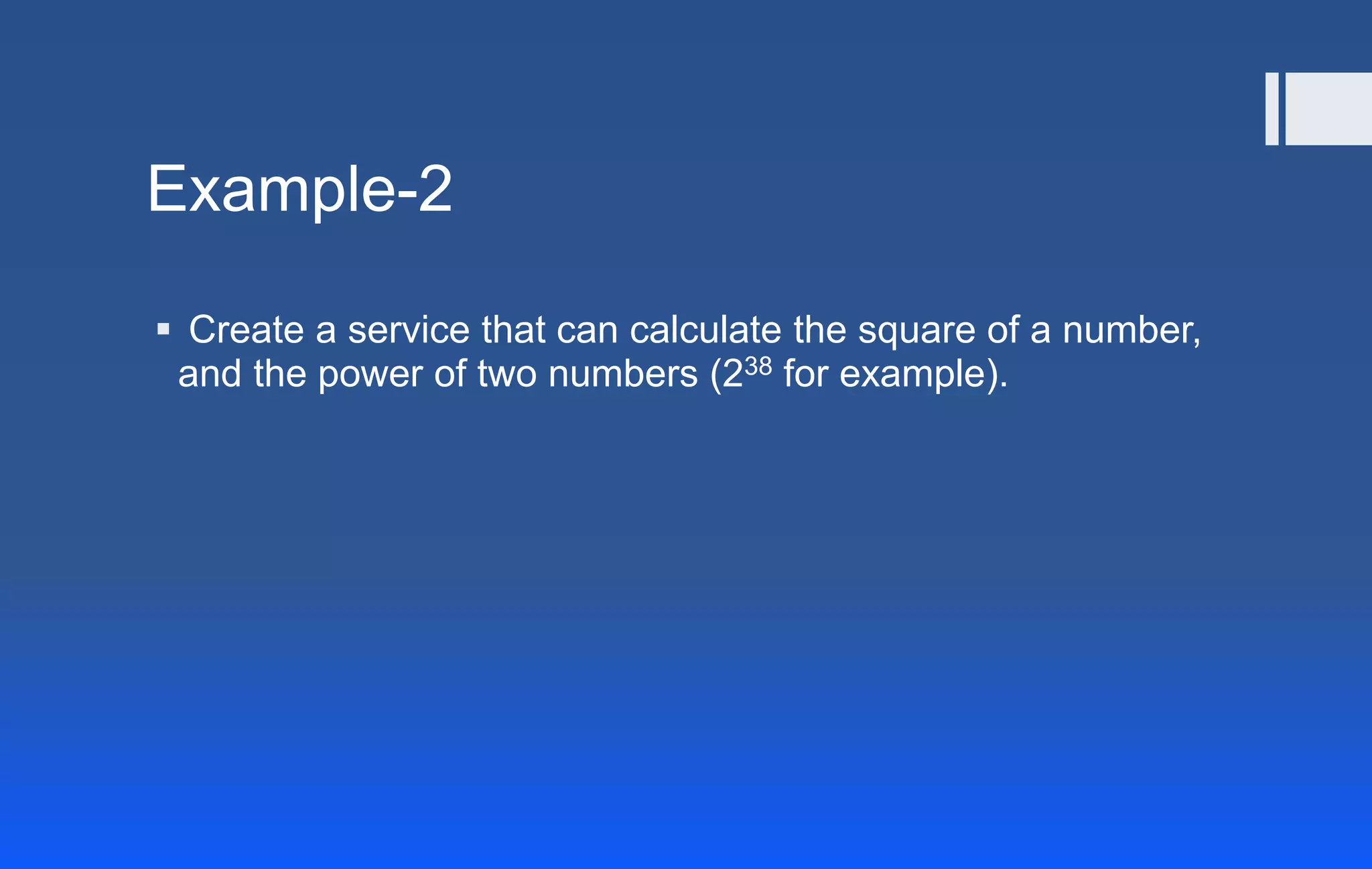
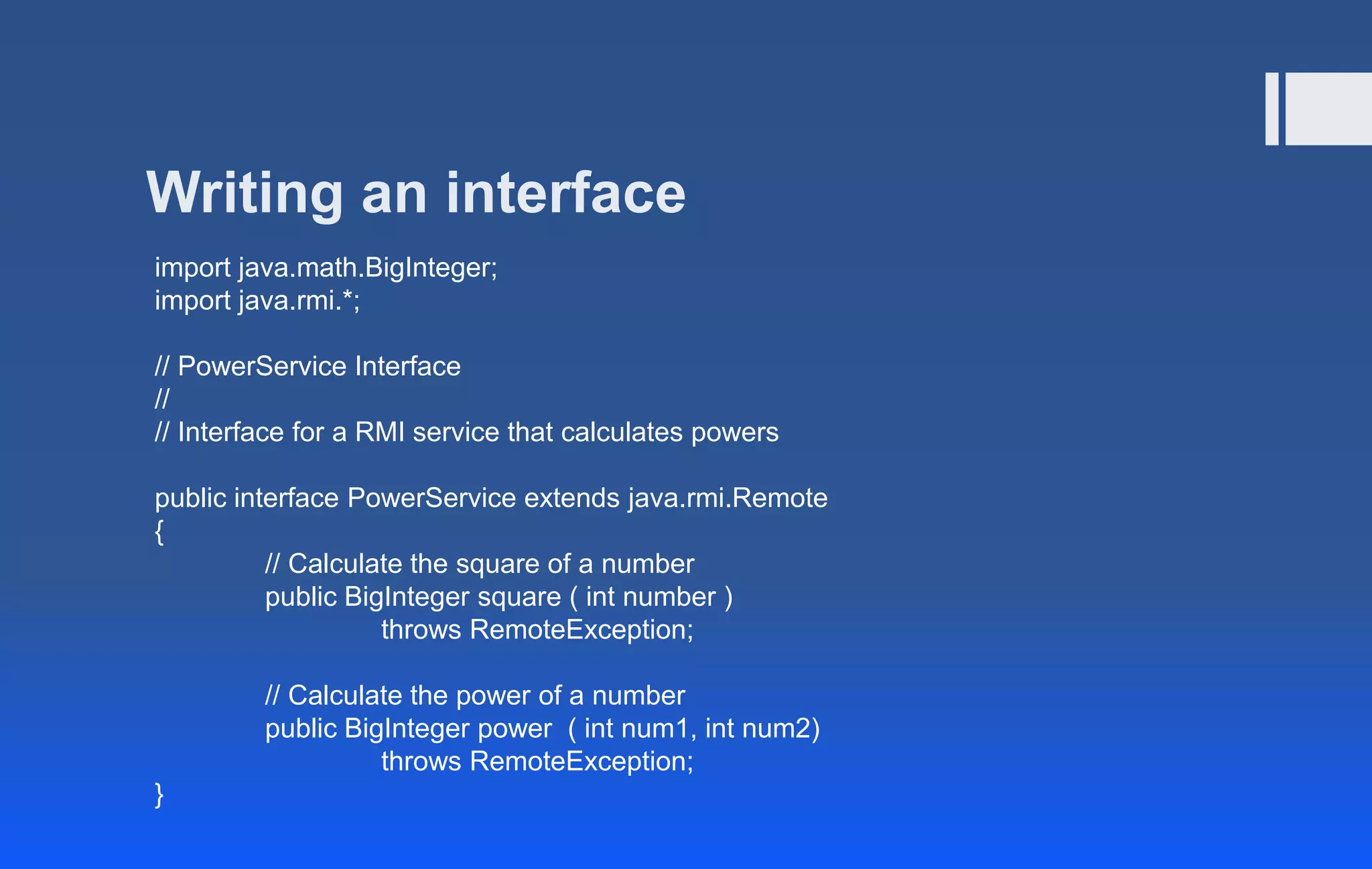
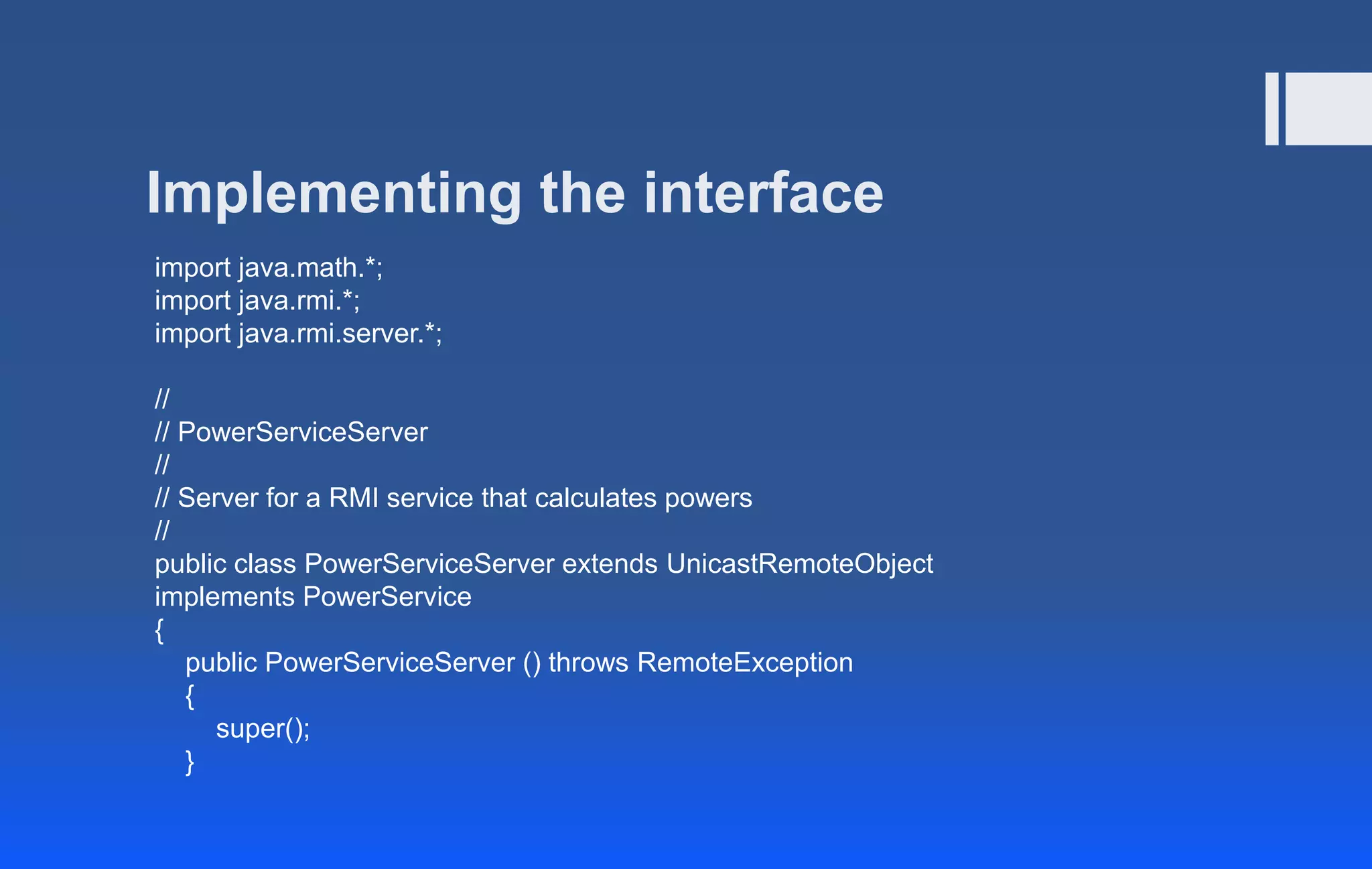
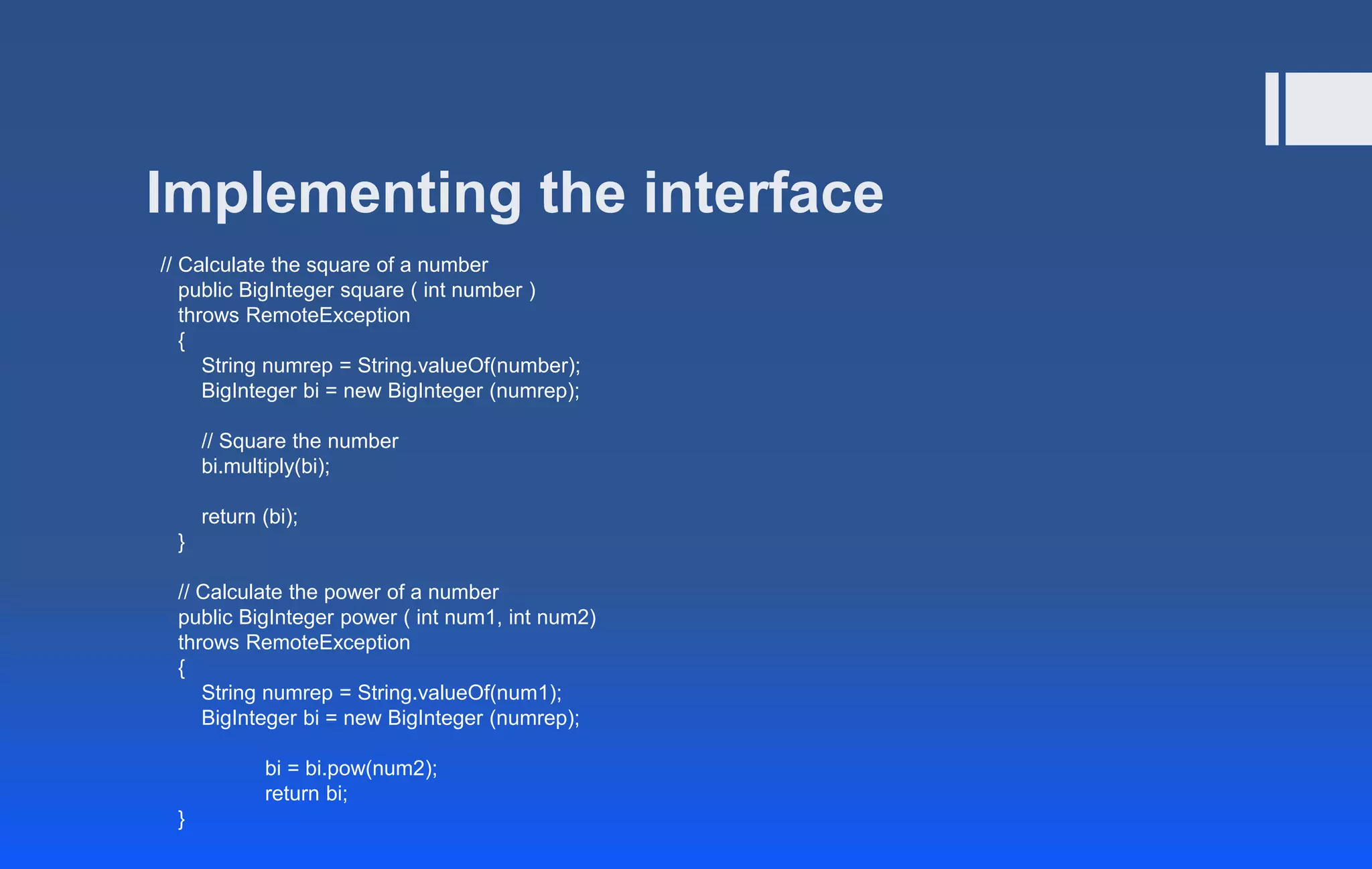
![Implementing the interface
public static void main ( String args[] ) throws Exception
{
// Assign a security manager, in the event that dynamic
// classes are loaded
if (System.getSecurityManager() == null)
System.setSecurityManager ( new RMISecurityManager() );
// Create an instance of our power service server ...
PowerServiceServer svr = new PowerServiceServer();
// ... and bind it with the RMI Registry
Naming.bind ("PowerService", svr);
System.out.println ("Service bound....");
}
}](https://image.slidesharecdn.com/rmi-180209072810/75/Remote-Method-Invocation-in-JAVA-24-2048.jpg)
![Writing a RMI client
import java.rmi.*;
import java.rmi.Naming;
import java.io.*;
// PowerServiceClient
public class PowerServiceClient
{
public static void main(String args[]) throws Exception
{
// Check for hostname argument
if (args.length != 1)
{
System.out.println("Syntax - PowerServiceClient host");
System.exit(1);
}
// Assign security manager
if (System.getSecurityManager() == null)
{
System.setSecurityManager
(new RMISecurityManager());
}](https://image.slidesharecdn.com/rmi-180209072810/75/Remote-Method-Invocation-in-JAVA-25-2048.jpg)
![Writing a RMI client
// Call registry for PowerService
PowerService service = (PowerService)
Naming.lookup
("rmi://" + args[0] + "/PowerService");
DataInputStream din = new
DataInputStream (System.in);](https://image.slidesharecdn.com/rmi-180209072810/75/Remote-Method-Invocation-in-JAVA-26-2048.jpg)
